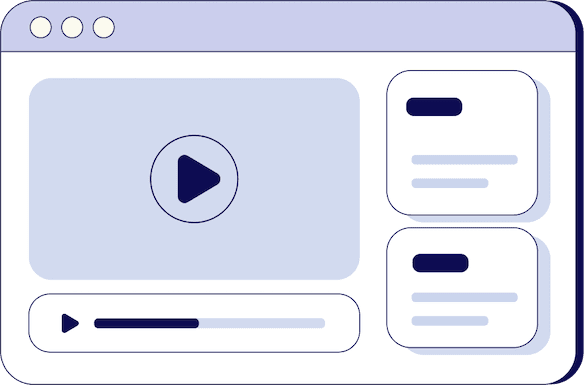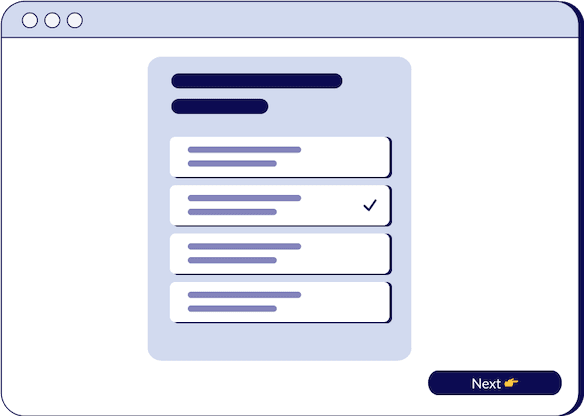
5 (powerful) Sales Questions to Ask A Potential Client to Determine Their Needs
Marc Wayshak
Founder, Author & Sales Strategist

- duration
- 12 min
- Average Score
- 88%
- Stars
- 5
Why is it crucial to dig deeper into a prospect's initial statements about their challenges? In the sales world, understanding a potential client's needs isn't just about asking questions; it's about asking the right questions in a structured way. Research indicates that deeper engagement in discovery conversations leads to higher conversion rates. This session focuses on the critical first step in that process: asking "Tell Me More" to truly understand a prospect's challenges.
Going Beyond the Surface
The initial challenges that prospects mention are often just the tip of the iceberg. To uncover the real issues, sales professionals need to peel back the layers, much like peeling an onion. The first layer of information might not reveal much, but as you ask more probing questions, you start to get to the heart of the prospect's challenges.
The Psychology of Deep Inquiry
Asking "Tell Me More" isn't just about gathering information; it's about showing genuine interest and concern for the prospect's situation. This approach shifts the conversation from a transactional interaction to a consultative dialogue, where the salesperson plays the role of a problem solver rather than just a product pusher.
Strategies for Effective Inquiry
- Listen actively: Show that you're fully engaged by summarizing their points and asking follow-up questions based on their responses.
- Encourage detailed descriptions: Use prompts like "What happened next?" or "How did that affect you?" to get more detailed insights.
- Avoid jumping to solutions too quickly: Resist the urge to offer a product or service as soon as a problem is mentioned. Instead, focus on fully understanding the challenge.
The Impact of "Tell Me More"
Asking this simple question can transform the sales process. It helps sales professionals:
- Build trust by demonstrating empathy and understanding.
- Identify cross-selling and up-selling opportunities by uncovering unmet needs.
- Tailor their pitch to address the prospect's specific challenges, making it more relevant and compelling.
Understanding a prospect's challenges through in-depth questioning is the foundation of a successful sales strategy. By mastering the art of asking "Tell Me More," sales reps can significantly improve their ability to connect with prospects, understand their needs, and offer solutions that truly make a difference.
For a deeper dive into how to effectively engage prospects and uncover their real needs, watch this session to learn more about understanding the prospect's challenges through the art of asking 'Tell Me More.' This session is an essential tool for sales professionals looking to refine their questioning techniques and build more meaningful relationships with potential clients.
How can sales reps transition from abstract needs to concrete challenges? Understanding a prospect's challenges in a tangible way is crucial for crafting solutions that resonate. Statistics show that real-world examples significantly enhance the sales conversation, making the problem—and the need for a solution—more immediate and palpable. This session delves into the strategic importance of asking for recent examples to make the sales dialogue as relevant and impactful as possible.
From Theory to Reality
When prospects discuss their challenges, the conversation often remains in the realm of the abstract. Asking for recent examples brings these challenges into the real world, giving sales reps the context they need to understand the depth and nuance of the problem.
The Strategy Behind Specific Examples
Asking for recent examples isn't just about getting more information; it's about:
- Creating empathy: Showing genuine interest in the specifics of a prospect's challenge fosters a stronger connection.
- Identifying patterns: Recent examples can reveal underlying issues that might not be immediately apparent, offering insights into how best to tailor your solution.
- Building credibility: Demonstrating an understanding of the prospect's specific situation enhances your credibility as a knowledgeable and capable provider.
Techniques for Eliciting Detailed Examples
- Prompt with curiosity: Use phrases like, "Could you share a specific instance where this was a challenge?" to encourage detailed responses.
- Focus on the recent past: Asking for recent examples ensures that the information is relevant and reflects current challenges.
- Dig deeper: Follow up with questions about how the example impacted their business, what solutions they tried, and what the outcomes were.
Leveraging Examples to Tailor Solutions
Once you have a recent example, use it to:
- Demonstrate understanding: Reflect back the challenge and its impacts to show you've truly listened and understood.
- Customize your pitch: Align your solution directly with the details of the example, showing how it addresses the specific challenge they faced.
- Highlight benefits: Use the context of the example to illustrate the tangible benefits of your solution, making it easier for the prospect to envision the positive outcome.
Asking for recent examples is a powerful technique that brings abstract challenges into sharp focus, providing the clarity needed to propose effective solutions. By engaging prospects with requests for specific instances, sales reps can create a more compelling and relatable case for their products or services.
For insights into how to effectively utilize recent examples in your sales conversations, watch this session to learn more about the power of asking for recent examples. This session is tailored for sales professionals eager to enhance their ability to connect with prospects on a deeper level and present solutions that directly address real-world challenges.
How do sales professionals turn discussions about challenges into conversations about value? It's one thing to identify and understand a prospect's challenges; it's another to quantify these challenges in terms that resonate with the prospect, such as financial impact or opportunity cost. Studies have shown that when prospects can visualize their challenges in monetary terms, they're more likely to recognize the value of a solution. This session explores the critical step of asking the value question to bridge the gap between identifying challenges and presenting solutions.
The Significance of the Value Question
Asking prospects to quantify their challenges in financial terms accomplishes several key objectives:
- Facilitates a shift in perspective: It encourages prospects to view their challenges not just as operational issues but as opportunities for financial improvement.
- Establishes a baseline for ROI: By understanding the monetary impact of their challenges, prospects and sales reps can more easily discuss the return on investment (ROI) of proposed solutions.
Crafting the Value Question
The value question should be direct yet thoughtful, prompting prospects to consider the broader implications of their challenges. Effective formulations might include:
- "If you were able to overcome this challenge, what would it mean for your bottom line?"
- "Can you quantify the impact this issue has had on your revenue or costs?"
Strategies for Navigating the Value Conversation
- Be patient and listen: Give prospects time to think through their answer. This question may require them to consider aspects of their challenge they haven't previously quantified.
- Offer help if needed: Some prospects might struggle to quantify their challenges. Be prepared to guide them through a simple calculation or offer industry benchmarks as a reference point.
- Focus on both costs and opportunities: Remember to explore not just the cost of the problem but also the potential revenue or savings opportunities that solving it could unlock.
Leveraging Financial Impact in Your Solution
Once a prospect has articulated the financial impact of their challenge, tailor your solution to address these specific points. This makes your proposal more compelling and grounded in the prospect's reality:
- Align solutions with financial benefits: Highlight how your product or service can mitigate costs or enhance revenue in the context of the challenge discussed.
- Use the prospect's own figures: Incorporate the numbers provided by the prospect into your presentation of the solution, reinforcing the personalized nature of your proposal.
Asking the value question transforms a conversation about challenges into a discussion about opportunities and solutions. It's a pivotal technique that enables sales professionals to connect more deeply with the needs of their prospects and to present their offerings in a way that aligns with the prospect's financial goals.
For a comprehensive look at how to effectively employ the value question in your sales strategy, watch this session to learn more about translating challenges into opportunities. This session is invaluable for sales professionals seeking to refine their approach to uncovering and addressing the financial aspects of their prospects' challenges.
Why is understanding the timing and personal impact of a challenge critical in sales? In the sales process, recognizing the urgency and personal relevance of a prospect's challenge can be the difference between a closed deal and a missed opportunity. This session focuses on the importance of discerning not only the nature of the challenge but also its immediacy and direct effect on the decision-maker. This approach ensures sales conversations are not only relevant but also timely and empathetic, aligning solutions with the prospect's current priorities.
The Urgency of "Why Now?"
Asking "Why is this an issue right now?" moves the conversation beyond the identification of challenges to the prioritization of solutions. This question:
- Uncovers hidden pressures: It reveals external or internal deadlines, market pressures, or other factors increasing the challenge's urgency.
- Clarifies the prospect's timeline: Understanding the timeline helps tailor the sales approach to meet the prospect's immediate needs and decision-making process.
Strategies for Addressing Timing
Effective strategies to navigate the timing of a prospect's challenges include:
- Active listening for cues: Pay attention to mentions of quarterly goals, upcoming events, or other time-sensitive indicators.
- Follow-up for clarity: If a prospect indicates a challenge is a current priority, ask follow-up questions to understand why it's critical at this moment.
Personal Impact: The Emotional Driver
Understanding how a challenge affects a prospect personally shifts the sales conversation from a transactional exchange to a consultative relationship. This insight:
- Drives home the value of a solution: By linking solutions to the prospect's personal or professional goals, you make your offering more compelling.
- Builds deeper connections: Demonstrating genuine concern for the individual's well-being and success fosters trust and rapport.
Questions to Uncover Personal Impact
- "How is this challenge affecting you or your team directly?"
- "What would resolving this issue mean for you personally?"
These questions encourage prospects to share the personal stakes involved, providing valuable context to tailor your messaging and solution.
Leveraging Timing and Personal Impact in Solutions
Armed with knowledge about the timing and personal impact, sales professionals can:
- Prioritize solutions based on urgency: Address the most immediate needs first to demonstrate understanding and responsiveness.
- Personalize the value proposition: Highlight aspects of your solution that directly alleviate the personal pressures or challenges faced by the prospect.
Understanding the timing and personal impact of a prospect's challenge is essential for providing timely, relevant, and empathetic solutions. This approach not only enhances the effectiveness of the sales process but also deepens the relationship between the sales professional and the prospect, paving the way for more meaningful and successful engagements.
For insights into tailoring your sales strategy to the timing and personal impact of your prospect's challenges, watch this session to learn more about prioritizing the prospect's needs. This guide is designed for sales professionals aiming to enhance their consultative selling skills by focusing on the critical aspects of urgency and personal relevance in the sales conversation.
How Triple Session works
Training, Testing, & Feedback
Triple Session's proven formula accelerates your sales performance through consistent, organized practice, backed by measurable results.

Bite-Sized Knowledge
Our expert-led video sessions simplify complex sales concepts into easy-to-digest 5-15 minute videos for better retention.

Test Your Understanding
After each session, there will be a quiz to test your understanding and help you improve on any areas that need more attention.

Evaluate and Grow
Get progress snapshots after each quiz to track your improvements and achieve your sales mastery goals.